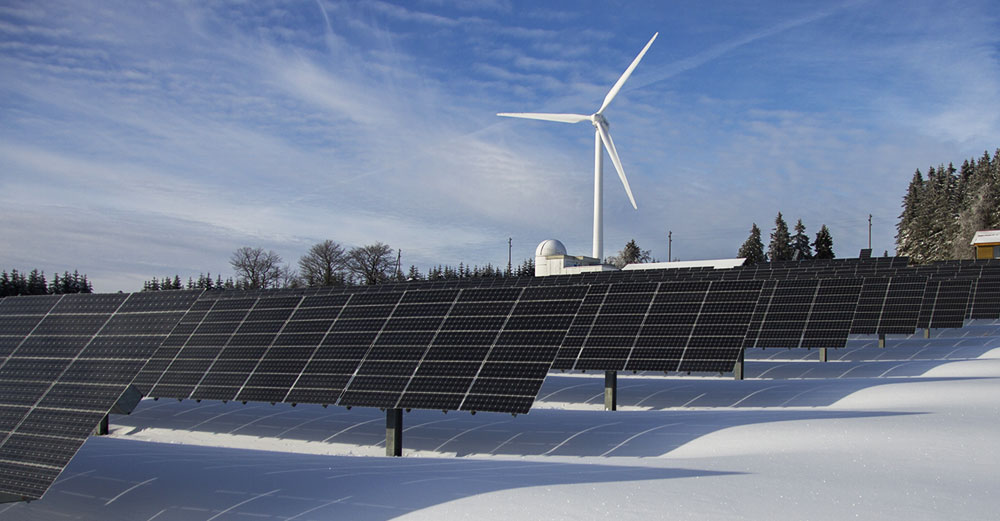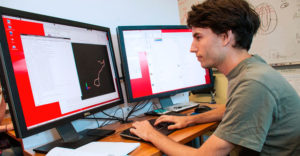
Climate change, pollution, and energy use are topics we see in front of us on a near daily basis in today’s day. We know there are many things that we can do to lessen our usage and help keep the planet and our communities running clean and efficient. Now SUNY leadership is ready to step up and help guide the way for our 64 colleges and universities to be real leaders in sustainability and clean energy.
The passion for renewable energy, sustainability, and science is present throughout SUNY. We heard these points in the inaugural State of the University System address, where Chancellor Johnson laid out four themes that will position SUNY as a national leader in higher education: innovation and entrepreneurship, individualized education, sustainability, and partnerships. As of yesterday, headway is already being made on the subject of energy use through the sustainability and partnership themes – SUNY announced a partnership with leading North American research universities to form an international coalition on climate action.
The initiative, called the University Climate Change Coalition (UC3), will focus on helping communities achieve climate goals and accelerate the transition to a low-carbon future. Each member of UC3 has pledged to reduce their institutional carbon footprints, whether it be making more climate-friendly investments or becoming operationally carbon neutral, and will align with the goals of the Paris Climate Agreement and the Under2 MOU for subnational climate leaders.
A clean SUNY
Outlined during Chancellor Johnson’s 2018 SOTUS address, many announcements were made regarding climate change and sustainable energy, and joining the coalition is an example of the sustainability and partnership themes at work. SUNY plans to source 100 percent of its electricity from zero-net-carbon sources, including renewables and energy storage, as soon as possible. Previously, SUNY committed to improving its energy efficiency performance by 20 percent by 2020 from 1990 levels, as put forth by Governor Andrew M. Cuomo’s Executive Order number 88. SUNY will also reduce its greenhouse gas emissions by 30 percent by 2020 and 40 percent by 2030 compared to 2015 baseline levels, as outlined in Governor Cuomo’s Executive Order number 166.
Additionally, Chancellor Johnson announced another goal, which includes using deep energy retrofits into capital maintenance projects across the system. SUNY is also in the works of installing renewable energy at each of our 64 campuses by 2020, with a goal of 50 percent renewable generation by 2030.
Given our size, @SUNY can play a major role to make New York State a national leader in sustainability. Via @WAMCRadio, a recap of my #SOTUS2018 address. https://t.co/2DHUqHmgvr
— Kristina M. Johnson (@SUNYChancellor) January 23, 2018
“Sustainability is a shared responsibility to preserve our civilization, and I am passionate about the leadership role SUNY can take in educating the next generation of sustainability leaders, researching climate change solutions, and creating energy-efficient environments across our 64 campuses,” said SUNY Chancellor Johnson. “By joining the coalition with other leaders in higher education we take that effort international.On behalf of SUNY, we are proud to join the University Climate Change Coalition and I am thankful to my fellow university leaders for their partnership in this effort.”
Requirements for being a member of the coalition include the following commitments: hosting a cross-sector climate change forum in 2018 to bring together community and business leaders, elected officials, and other local stakeholders; and creating a report of practices, policies, and recommendations for continued progress on climate change goals across the nation and world.
To kick off the launch of UC3, Stony Brook University President Samuel L. Stanley Jr. represented SUNY at the 2018 Higher Education Climate Leadership Summit. Stony Brook University recently spent $5.7 million to reduce energy costs by $832,00 per year, and carbon emissions will be reduced by 3,800 tons per year.
“It’s certainly an honor to be a part of this coalition, but more than that, this is an opportunity to pool our resources with other institutions and make a lasting impact on climate change,” said President Stanley. “This is a critical time that calls for decisive action.”
You can find more information on the UC3 coalition by visiting their website. Or, watch President Stanley in his UC3 panel on The Role of Research Universities in Place-Based Climate Action in the video below:



